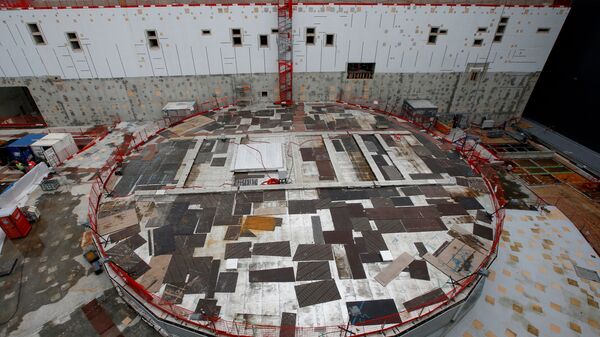ITER is an international experimental thermonuclear reactor project, whose assembly started in late July in southern France. The project is aimed at demonstrating the possibility of generating energy with controlled thermonuclear fusion. The new energy source will be more environmentally friendly and safer than hydrocarbons and uranium.
Specialists from Russia, the EU, the US, China, India, Japan, and South Korea are working on ITER. Russia develops and supplies equipment for ITER's key systems.
The Budker Institute of Nuclear Physics of the Siberian Branch of the Russian Academy of Sciences (INP SB RAS) is engaged in developing a number of devices to diagnose plasma parameters in the reactor. These devices' components are welded; according to scientists, in order to use them in a reactor, the quality and reliability of the seams should be checked with the highest accuracy.

TPU specialists will develop methods to control them.
"ITER is a nuclear facility with very high requirements for the quality and safety of all systems used. In particular, 100% control of all welded seams is required. TPU is solving this important scientific and technical problem, the control of seams with ultrasound", Alexander Burdakov, adviser to the Directorate of the INP SB RAS and head of the INP SB RAS Laboratory, said.
The devices and parts, which are to be checked using TPU's methods, are large in size, which makes other non-destructive testing methods such as X-ray extremely inconvenient, the researchers said.
Ultrasound capabilities allow working with large objects. Ultrasonic waves pass through the object, interacting with its internal structure; these interactions are reflected in the backward wave. Based on them, experts can see hidden defects in a seam and their characteristics.
"This will be the second project for ITER, involving TPU specialists. Previously, we created an ultrasonic tomograph to inspect the details of the reactor's first wall; it knows no equals either in Russia or throughout the world. It is currently at experimental service at the customer's site, the Efremov Institute of Electrophysical Apparatus", Dmitry Sednev, head of the TPU Engineering School of Non-Destructive Testing, said.
The previous project demonstrated to international experts that the instruments and methods for control offered by TPU are applicable to ITER and provide the required level of quality control, Dmitry Sednev believes.
"First of all, we should offer the INP SB RAS a method to control the welded joints of the devices developed so that the devices themselves can be safely operated", he said.
TPU is to present its methods and programmes for ultrasonic testing in November 2020.


